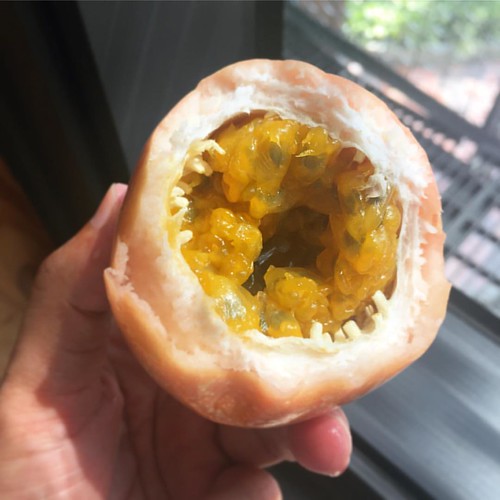The appropriate complementary sequences (12 rev-12 rev, 11 rev-13 rev, 14 rev-13 rev, Table 1) to obtain the nicked C A/T rich oligonucleotides shown above the gel. The folded oligonucleotides were incubated with CL (100 mM) for 24 h at 37uC. After reaction, samples were precipitated and either kept on ice or treated with hot piperidine and lyophilized (samples indicated by the symbol P) and Cy5 NHS Ester cost loaded on a 20 denaturing polyacrylamide gel. The symbol 1 indicates CL/full-length DNA adducts which migrate slower than the full-length DNA. The symbol ?indicates bands that correspond to the oligonucleotide alkylated and cleaved by CL. The symbol * indicates bands that correspond to the oligonucleotide alkylated and cleaved by CL, with loss of CL. The symbols 4 and # indicate bases in the ds region flanking the nicked moiety that are alkylated and cleaved by CL (4), with loss of CL (#). Position of alkylation is evinced by comparison of MedChemExpress CY5-SE cleavage bands after piperidine treatment and the Maxam and Gilbert marker lane. Oligonucleotide sequences are indicated aside of the corresponding marker lane (M lanes). Base numbering has been assigned in the 5 primeR3 prime direction. doi:10.1371/journal.pone.0052994.glanes 5 and 6, Fig. 5C). The effect of the type of ss bases close to the ds region was thus analysed by assaying oligos with 7-base hairpins formed by CTTTTTA or TTTTTTG ss bases (Fig. 5C). We observed a very strong cleavage at the two adjacent ds Gs in the case of the CTTTTTA hairpin. A less intense effect was detected with the TTTTTTG segment. In this case, however, cleavage was also obtained at the ss G sequence (?symbols, lanes 5 and 6, Fig. 5C).Long Bulged Regions are Less Sterically HinderedBy testing secondary structures with ss segments of different length  we were able to evince that CL reacts at ss region longerthan 1 base and in general its reactivity increments with the length of the ss portion. However, one main exception occurred with bulged structures, where the optimal ss length for CL reactivity was 3-bp, whereas lower reactivity was observed either decrementing (1 or 2 bp) or incrementing (5 or 7 bp) the bulge length. To understand why oligonucleotides with more than 3 bulged bases were less susceptible
we were able to evince that CL reacts at ss region longerthan 1 base and in general its reactivity increments with the length of the ss portion. However, one main exception occurred with bulged structures, where the optimal ss length for CL reactivity was 3-bp, whereas lower reactivity was observed either decrementing (1 or 2 bp) or incrementing (5 or 7 bp) the bulge length. To understand why oligonucleotides with more than 3 bulged bases were less susceptible  to CL cleavage, bulged sequences of the same overall length but with a different number of 23727046 bulged bases (Table 1) were tested by electrophoretic mobility shift assay (EMSA). As shown in Fig. 6, electrophoretic mobility of 1-, 2-, 3-bulged oligonucleotides was similar to that of the control ds oligo (compare lanes 1? with ds, left side), slightly increasing with theClerocidin Dissects DNA Secondary Structureand 14, were heat denaturated and folded in the presence of the appropriate complementary sequences (1b rev, 1c rev, 1d rev, Table 1) to obtain the bulged C A/T rich oligonucleotides shown above the gel. The folded oligonucleotides were incubated with increasing concentrations (50?00 mM) of CL for 24 h at 37uC. After reaction, samples were precipitated and either kept on ice or treated with hot piperidine and lyophilized (samples indicated by the symbol P) and loaded on a 20 denaturing polyacrylamide gel. The symbol 1 indicates CL/fulllength DNA adducts which migrate slower than the full-length DNA. The symbol ?indicates bands that correspond to the oligonucleotide alkylated and cleaved by CL. CL is still bound to the cleaved oligonucleotide, thus the cleavage band runs slower than the corresponding band in the Maxam and Gilbe.The appropriate complementary sequences (12 rev-12 rev, 11 rev-13 rev, 14 rev-13 rev, Table 1) to obtain the nicked C A/T rich oligonucleotides shown above the gel. The folded oligonucleotides were incubated with CL (100 mM) for 24 h at 37uC. After reaction, samples were precipitated and either kept on ice or treated with hot piperidine and lyophilized (samples indicated by the symbol P) and loaded on a 20 denaturing polyacrylamide gel. The symbol 1 indicates CL/full-length DNA adducts which migrate slower than the full-length DNA. The symbol ?indicates bands that correspond to the oligonucleotide alkylated and cleaved by CL. The symbol * indicates bands that correspond to the oligonucleotide alkylated and cleaved by CL, with loss of CL. The symbols 4 and # indicate bases in the ds region flanking the nicked moiety that are alkylated and cleaved by CL (4), with loss of CL (#). Position of alkylation is evinced by comparison of cleavage bands after piperidine treatment and the Maxam and Gilbert marker lane. Oligonucleotide sequences are indicated aside of the corresponding marker lane (M lanes). Base numbering has been assigned in the 5 primeR3 prime direction. doi:10.1371/journal.pone.0052994.glanes 5 and 6, Fig. 5C). The effect of the type of ss bases close to the ds region was thus analysed by assaying oligos with 7-base hairpins formed by CTTTTTA or TTTTTTG ss bases (Fig. 5C). We observed a very strong cleavage at the two adjacent ds Gs in the case of the CTTTTTA hairpin. A less intense effect was detected with the TTTTTTG segment. In this case, however, cleavage was also obtained at the ss G sequence (?symbols, lanes 5 and 6, Fig. 5C).Long Bulged Regions are Less Sterically HinderedBy testing secondary structures with ss segments of different length we were able to evince that CL reacts at ss region longerthan 1 base and in general its reactivity increments with the length of the ss portion. However, one main exception occurred with bulged structures, where the optimal ss length for CL reactivity was 3-bp, whereas lower reactivity was observed either decrementing (1 or 2 bp) or incrementing (5 or 7 bp) the bulge length. To understand why oligonucleotides with more than 3 bulged bases were less susceptible to CL cleavage, bulged sequences of the same overall length but with a different number of 23727046 bulged bases (Table 1) were tested by electrophoretic mobility shift assay (EMSA). As shown in Fig. 6, electrophoretic mobility of 1-, 2-, 3-bulged oligonucleotides was similar to that of the control ds oligo (compare lanes 1? with ds, left side), slightly increasing with theClerocidin Dissects DNA Secondary Structureand 14, were heat denaturated and folded in the presence of the appropriate complementary sequences (1b rev, 1c rev, 1d rev, Table 1) to obtain the bulged C A/T rich oligonucleotides shown above the gel. The folded oligonucleotides were incubated with increasing concentrations (50?00 mM) of CL for 24 h at 37uC. After reaction, samples were precipitated and either kept on ice or treated with hot piperidine and lyophilized (samples indicated by the symbol P) and loaded on a 20 denaturing polyacrylamide gel. The symbol 1 indicates CL/fulllength DNA adducts which migrate slower than the full-length DNA. The symbol ?indicates bands that correspond to the oligonucleotide alkylated and cleaved by CL. CL is still bound to the cleaved oligonucleotide, thus the cleavage band runs slower than the corresponding band in the Maxam and Gilbe.
to CL cleavage, bulged sequences of the same overall length but with a different number of 23727046 bulged bases (Table 1) were tested by electrophoretic mobility shift assay (EMSA). As shown in Fig. 6, electrophoretic mobility of 1-, 2-, 3-bulged oligonucleotides was similar to that of the control ds oligo (compare lanes 1? with ds, left side), slightly increasing with theClerocidin Dissects DNA Secondary Structureand 14, were heat denaturated and folded in the presence of the appropriate complementary sequences (1b rev, 1c rev, 1d rev, Table 1) to obtain the bulged C A/T rich oligonucleotides shown above the gel. The folded oligonucleotides were incubated with increasing concentrations (50?00 mM) of CL for 24 h at 37uC. After reaction, samples were precipitated and either kept on ice or treated with hot piperidine and lyophilized (samples indicated by the symbol P) and loaded on a 20 denaturing polyacrylamide gel. The symbol 1 indicates CL/fulllength DNA adducts which migrate slower than the full-length DNA. The symbol ?indicates bands that correspond to the oligonucleotide alkylated and cleaved by CL. CL is still bound to the cleaved oligonucleotide, thus the cleavage band runs slower than the corresponding band in the Maxam and Gilbe.The appropriate complementary sequences (12 rev-12 rev, 11 rev-13 rev, 14 rev-13 rev, Table 1) to obtain the nicked C A/T rich oligonucleotides shown above the gel. The folded oligonucleotides were incubated with CL (100 mM) for 24 h at 37uC. After reaction, samples were precipitated and either kept on ice or treated with hot piperidine and lyophilized (samples indicated by the symbol P) and loaded on a 20 denaturing polyacrylamide gel. The symbol 1 indicates CL/full-length DNA adducts which migrate slower than the full-length DNA. The symbol ?indicates bands that correspond to the oligonucleotide alkylated and cleaved by CL. The symbol * indicates bands that correspond to the oligonucleotide alkylated and cleaved by CL, with loss of CL. The symbols 4 and # indicate bases in the ds region flanking the nicked moiety that are alkylated and cleaved by CL (4), with loss of CL (#). Position of alkylation is evinced by comparison of cleavage bands after piperidine treatment and the Maxam and Gilbert marker lane. Oligonucleotide sequences are indicated aside of the corresponding marker lane (M lanes). Base numbering has been assigned in the 5 primeR3 prime direction. doi:10.1371/journal.pone.0052994.glanes 5 and 6, Fig. 5C). The effect of the type of ss bases close to the ds region was thus analysed by assaying oligos with 7-base hairpins formed by CTTTTTA or TTTTTTG ss bases (Fig. 5C). We observed a very strong cleavage at the two adjacent ds Gs in the case of the CTTTTTA hairpin. A less intense effect was detected with the TTTTTTG segment. In this case, however, cleavage was also obtained at the ss G sequence (?symbols, lanes 5 and 6, Fig. 5C).Long Bulged Regions are Less Sterically HinderedBy testing secondary structures with ss segments of different length we were able to evince that CL reacts at ss region longerthan 1 base and in general its reactivity increments with the length of the ss portion. However, one main exception occurred with bulged structures, where the optimal ss length for CL reactivity was 3-bp, whereas lower reactivity was observed either decrementing (1 or 2 bp) or incrementing (5 or 7 bp) the bulge length. To understand why oligonucleotides with more than 3 bulged bases were less susceptible to CL cleavage, bulged sequences of the same overall length but with a different number of 23727046 bulged bases (Table 1) were tested by electrophoretic mobility shift assay (EMSA). As shown in Fig. 6, electrophoretic mobility of 1-, 2-, 3-bulged oligonucleotides was similar to that of the control ds oligo (compare lanes 1? with ds, left side), slightly increasing with theClerocidin Dissects DNA Secondary Structureand 14, were heat denaturated and folded in the presence of the appropriate complementary sequences (1b rev, 1c rev, 1d rev, Table 1) to obtain the bulged C A/T rich oligonucleotides shown above the gel. The folded oligonucleotides were incubated with increasing concentrations (50?00 mM) of CL for 24 h at 37uC. After reaction, samples were precipitated and either kept on ice or treated with hot piperidine and lyophilized (samples indicated by the symbol P) and loaded on a 20 denaturing polyacrylamide gel. The symbol 1 indicates CL/fulllength DNA adducts which migrate slower than the full-length DNA. The symbol ?indicates bands that correspond to the oligonucleotide alkylated and cleaved by CL. CL is still bound to the cleaved oligonucleotide, thus the cleavage band runs slower than the corresponding band in the Maxam and Gilbe.
